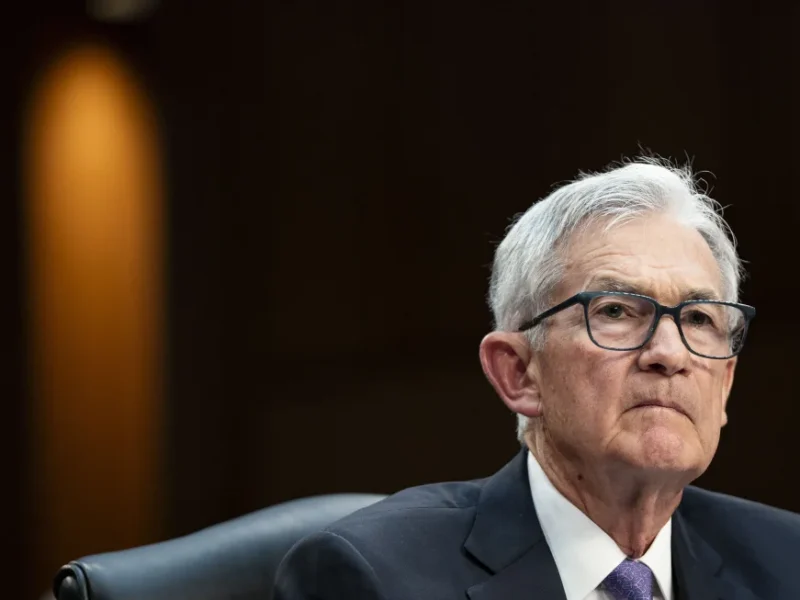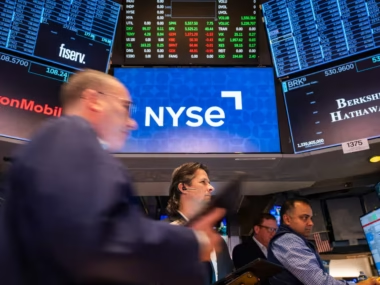Americans looking for relief from high borrowing rates might not have to wait much longer.
In June, US consumer prices fell for the first time since the early months of the pandemic. Data released on Thursday showed that consumer prices dropped by 0.1% from May. Yearly inflation eased to 3% last month from 3.3% in May.
This slowdown in inflation has led investors to anticipate that the Federal Reserve might cut interest rates sooner. Wall Street’s expectations for a September rate cut increased to about 93% on Thursday from 73% the previous day, according to the CME FedWatch Tool.
“A September rate cut should be a certainty now,” wrote Ron Temple, chief market strategist at Lazard, in a note on Thursday.
BNP Paribas economists updated their predictions on Thursday to include a rate cut in September, citing the combination of June’s inflation and employment data. They forecast two quarter-point cuts in 2024.
The Fed’s dual mandate is to maintain stable prices and low unemployment. The central bank began raising interest rates in 2022 to control inflation and has kept them at their current 23-year high since last July.
Thursday’s data, along with a cooling but steady labor market, is a positive sign that the Fed may achieve its mandate and start lowering the high rates in September. The US economy added 206,000 jobs in June, slightly less than the revised 215,000 jobs in May, and the unemployment rate surpassed 4% for the first time since November 2021. New unemployment benefit applications have also increased in recent weeks.
Fed Chair Jerome Powell did not indicate when the central bank might start cutting rates during his congressional testimony earlier this week. However, he noted that inflation has slowed and the labor market is “strong, but not overheated,” a change from a few months ago when inflation appeared to be accelerating, and the job market was very robust.
The Fed will need to review more data before its September meeting, which could influence its decisions. Some economists worry that if the Fed doesn’t cut rates by then, the labor market could worsen. Some investors are also concerned that the economy could weaken significantly before then.
A September rate cut “may not be the perfect solution some investors are hoping for,” wrote Brent Schutte, chief investment officer at Northwestern Mutual Wealth Management, in a note on Monday.
In June, prices fell for the first time since the beginning of the pandemic.
Americans, who have been burdened by rapidly rising prices for three years, received more positive news regarding inflation, according to my colleague Alicia Wallace.
The Consumer Price Index (CPI), which tracks the average change in prices for a typical basket of goods and services, decreased by 0.1% from May. This drop contributed to slowing the annual inflation rate to 3% from 3.3% in May, as reported by the Bureau of Labor Statistics (BLS).
Declines in gas prices and new and used car prices contributed to this first month-to-month decrease since May 2020, according to BLS data. On an annual basis, consumer prices are now rising at their slowest rate since June 2023, matching the lowest yearly rate since early 2021.
Excluding energy and food prices, the core CPI, a closely monitored index for underlying inflation, also slowed more than anticipated. The core CPI increased by 0.1% from May—its slowest pace since August 2021—bringing the annual core inflation rate down to 3.3% from 3.4%, marking a new three-year low.
Why Fast Food Value Menus Might Not Be as Good a Deal as They Seem
“Value” is the latest buzzword at fast-food chains across the country, reports my colleague Elisabeth Buchwald.
In response to rising prices that deterred customers, these restaurants have introduced value menus.
For example, McDonald’s offers a $5 value meal, which includes a McDouble cheeseburger or a McChicken sandwich, small french fries, a 4-piece chicken nugget, and a small soft drink.
Taco Bell has a $7 deal that includes two different kinds of tacos, a five-layer burrito, chips with nacho cheese sauce, and a medium drink, which is 55% cheaper than ordering the items individually.
Similarly, Burger King offers a $5 meal bundle where customers can choose one of three types of burgers along with chicken nuggets and a beverage.
However, just how valuable are these “value” meals?
Not as much as you might think. Prices for many key ingredients used in these value meals are decreasing, meaning you might be paying the standard rate—or even more.











